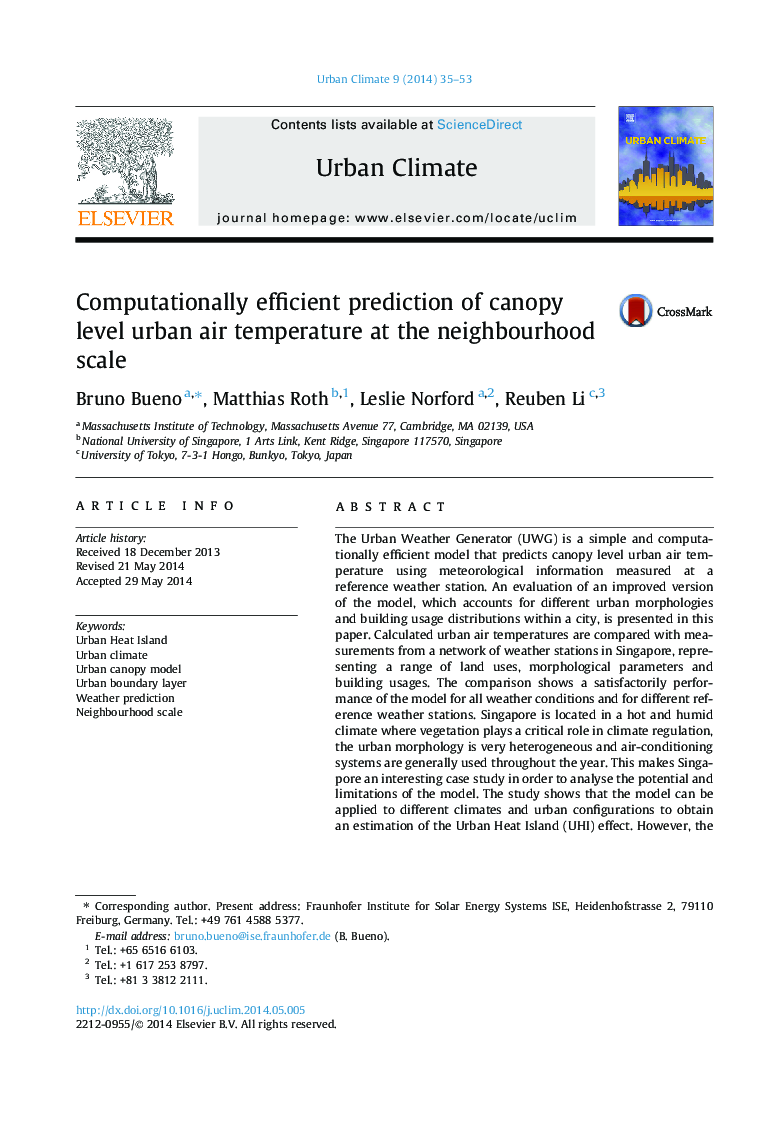| Article ID | Journal | Published Year | Pages | File Type |
|---|---|---|---|---|
| 143761 | Urban Climate | 2014 | 19 Pages |
•Computationally efficient model to predict canopy level urban air temperature.•The model accounts for different neighbourhoods and building usage distributions.•The model is satisfactorily evaluated against measurements in Singapore.•The advection of sensible heat in the boundary layer is small.•The size of the city has only a small impact on the UHI effect.
The Urban Weather Generator (UWG) is a simple and computationally efficient model that predicts canopy level urban air temperature using meteorological information measured at a reference weather station. An evaluation of an improved version of the model, which accounts for different urban morphologies and building usage distributions within a city, is presented in this paper. Calculated urban air temperatures are compared with measurements from a network of weather stations in Singapore, representing a range of land uses, morphological parameters and building usages. The comparison shows a satisfactorily performance of the model for all weather conditions and for different reference weather stations. Singapore is located in a hot and humid climate where vegetation plays a critical role in climate regulation, the urban morphology is very heterogeneous and air-conditioning systems are generally used throughout the year. This makes Singapore an interesting case study in order to analyse the potential and limitations of the model. The study shows that the model can be applied to different climates and urban configurations to obtain an estimation of the Urban Heat Island (UHI) effect. However, the simplifications and assumptions of the model prevent it from capturing very site-specific microclimate effects.
